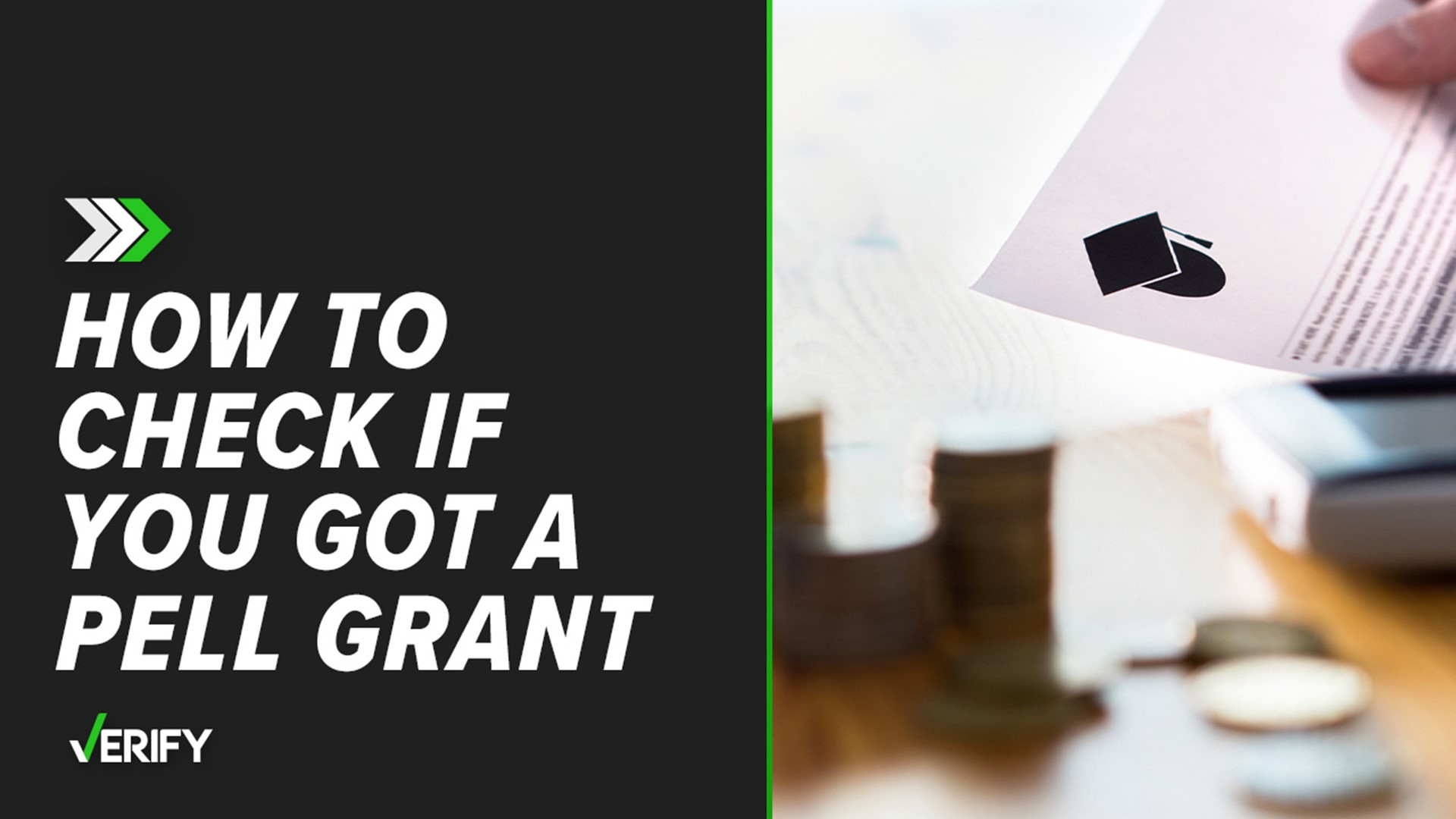UPDATE (6/30/23): The Supreme Court has struck down the Biden administration's one-time student loan forgiveness plan. Loan repayments are expected to resume later this summer. You can read more information here.
On Aug. 24, President Joe Biden announced his administration would be forgiving some federal student debt. The Department of Education is set to forgive up to $10,000 for many students, and up to $20,000 for students who received Pell Grants while in school.
Pell Grants are need-based federal grants awarded to college students. Unlike loans, they do not need to be repaid, but many Pell Grant recipients also used student loans to help pay for school.
The additional forgiveness for Pell Grant recipients was unexpected for many, and top search questions after Biden’s announcement were about Pell Grants and how to check if someone received one.
THE QUESTION
Is there a way for people to check if they received a Pell Grant?
THE SOURCES
Jessica Thompson, vice president of The Institute for College Access & Success (TICAS)
THE ANSWER
Yes, there is a way for people to check if they received a Pell Grant.
WHAT WE FOUND
Student borrowers can check their entire federal student aid history on the Federal Student Aid website run by the U.S. Department of Education. This includes their Pell Grant history.
You’ll find this information on your aid summary page once you’ve logged into studentaid.gov with your FSA ID.
Jessica Thompson, the vice president of The Institute for College Access & Success (TICAS), says this is where you can confirm if you’ve ever received a Pell Grant.
“We've been encouraging folks to [log into studentaid.gov] as soon as possible because you may run into issues where you can't figure out how to get logged on and you need to troubleshoot and you need to make some calls or emails to get help,” Thompson said. “Which may prolong the time it takes to get that access to that account.”
Thompson added that you shouldn’t need to prove you’ve ever received a Pell Grant to the Department of Education.
“They should be able to identify, and certainly have the data to know, who has ever been disbursed a Pell Grant,” Thompson said.
What are Pell Grants?
Federal Pell Grants are usually only awarded to undergraduate students with exceptional financial need, the Department of Education says. A Pell Grant does not have to be repaid like a student loan would.
The maximum annual Pell Grant award you can receive for the 2022-2023 school year is $6,895, but not everyone receives the maximum award. The amount you receive is determined based on how much your family is expected to pay for your schooling, the cost of attendance at your school, your status as a full-time or part-time student and if you’re attending school for the full academic year or less.
According to the Education Data Initiative, the average Pell Grant award in 2019 was $4,491 a year. That’s a little more than it was 10 years prior, when the average award was $3,975.
MORE FROM VERIFY: Fast Facts about student loan forgiveness
Who receives Pell Grants?
The White House says 94% of Pell Grant recipients in the 2019-2020 school year came from families with annual incomes of $60,000 or less. The White House said 66% of Pell Grant recipients came from families with incomes of $30,000 or less.
According to the Education Data Initiative, 51% of all Pell Grant funding goes to people from families who earn less than $20,000 annually.
The White House and Education Data Initiative say that 34% of undergraduate students nationwide receive Pell Grants, and more than 60% of student borrowers received Pell Grants while in school.
Roughly 27 million borrowers will be eligible to receive up to $20,000 in relief, according to White House estimates. The White House believes it will provide debt relief to 43 million borrowers in total.

